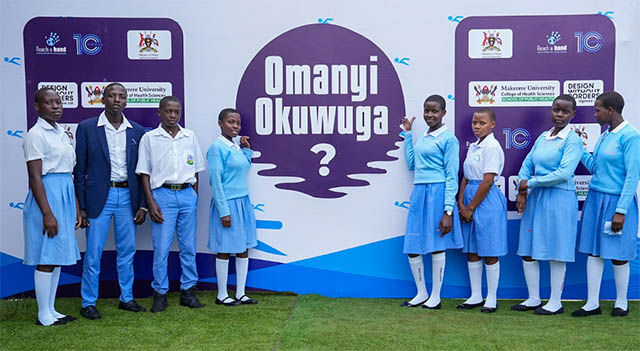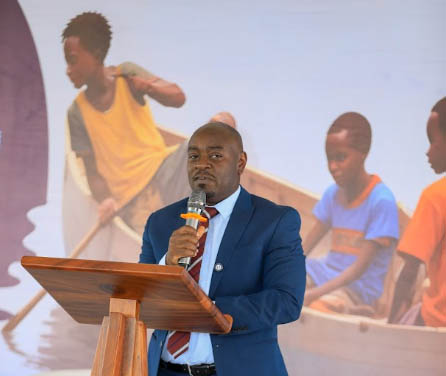
Urgent call to action as 2.5 Million Ugandans reported to have lost their lives to drowning in the last decade.
Masaka, Uganda | THE INDEPENDENT | The Commissioner, International and Transboundary Water Affairs, Ministry of Water and Environment, Eng. Sowed Sewagude, has called for collective action in addressing the rising cases of drowning deaths which have become a silent epidemic in Uganda.
Speaking during the launch of the Drowning Prevention Project that aims to make a contribution to the national goal of reducing drowning deaths in Uganda by 25% by the year 2025, Eng. Sewagude called for a unified effort in enforcing water safety measures and promoting the education of children so they are cautious around water bodies.
This project is being implemented by Reach a Hand Uganda in close partnership with the Ministry of Water and Environment, Design Without Borders and Makerere University School Of Public Health.
This comes at a critical time after media reports brought attention to the devastating news of the two rescue boats that capsized while attempting to save passengers of a taxi that were stranded in the middle of a flood along the Pakwach bridge on Wednesday this week. The rescue boat was carrying 6 rescue personnel and 6 rescued passengers when the incident occurred.
Prior to this tragic incident, two children were swept away by floods in Masaka City in September 2024 due to the ongoing heavy rains and two other children (siblings) drowned in River Sebwe in Kasese District while attempting to cross the river on their way home.
“The government of Uganda remains committed to creating safer communities for all and I hope this Drowning Prevention Project will inspire more initiatives and partnerships for drowning prevention and water safety,” said Eng.Sewagude.
According to a report by the Makerere University School of Public Health (2020), Uganda grapples with the highest rates of drowning deaths globally with an estimated 502 drowning deaths per 100,000 people especially in lakeside fishing communities.
The report also highlights that most drowning deaths remain unreported with more that 2,000 drowning cases identified in the report from an indepth study of 14 districts between 2016 and 2018.
While presenting the findings of the report during the function at Ssaza Grounds in Masaka City, Dr Frederick Oporia from the Makerere University School of Public Health, said that it was important to provide safe places for children, install barriers near water bodies, teach school-age children swimming skills and train first responders to effectively conduct first aid during drowning incidents.
“Uganda has recorded 2.5 million drowning deaths in the last decade making it the third leading cause of injury deaths in the world,” Dr. Oporia added.


He added that information gathered from different districts and communities in Uganda to support the report findings on drowning are important in guiding the design of interventions that will be implemented by Reach a Hand Uganda during this project.
“We can all recall the ‘balance the boat’ tragedy in 2018 that claimed the lives of 32 young adults when their boat capsized in Lake Victoria because of overcrowding and poor vessel maintenance,” Dr. Oporia echoed.
These incidents represent more than numbers but rather the crucial need to develop and implement effective water safety and drowning prevention strategies.
The Drowning Prevention Project is being implemented to curb the high cases of drowning and entrench safe water practices in the lakeside communities of Rakai, Masaka and Mayuge which have the highest number of recorded drowning deaths in the country.
Through this project, Reach a Hand Uganda and the Ministry of Water and Environment are seeking to reduce risk amongst vulnerable populations, groups and communities especially among children below 15 years through a multi-pronged approach that is responsive to the local contexts.
Speaking during the project launch, Reach a Hand Uganda’s Country Director, Benson Muhindo emphasised the need to provide accurate information with young people and children who are most at risk of drowning.
“Owing to the fact that life jackets are scarce, and we know from the report that 95% of people who have drowned from a boating incident were not wearing a life jacket at the time of the incident, we need to increase the capacity of our communities to prevent more of these incidents.” Muhindo said.

The report further states that the majority of drowning incidents occurred without any attempts to rescue the victims mostly because the witnesses did not have rescue skills or rescue equipment.
“Communities around Lake Victoria have recorded the highest drowning death rates in the world. Drowning has claimed innocent lives in lakes, rivers and running water from floods,” Muhindo added.
He said that Reach a Hand Uganda with the leadership of the ministry, will use a community-based approach to reduce drowning deaths by 25% by 2025 as guided by the National Drowning Prevention and Water Safety Strategic Plan developed by the Ministry of Water and Environment.
The approach will involve strengthening community response systems and creating safe spaces including community owned swimming pools so young children and adults are able to learn survival swimming.
Presently, Reach a Hand has been conducting training of trainers in the three districts and collaborating with school authorities and the Ministry of Education and Sports to support the sensitisation of children and promote water safety practices.
The Drowning Prevention Project is being implemented under an advocacy campaign dubbed, ‘Omanyi Okuwuga’ to create public awareness and responsibility in curbing drowning deaths.
 The Independent Uganda: You get the Truth we Pay the Price
The Independent Uganda: You get the Truth we Pay the Price



